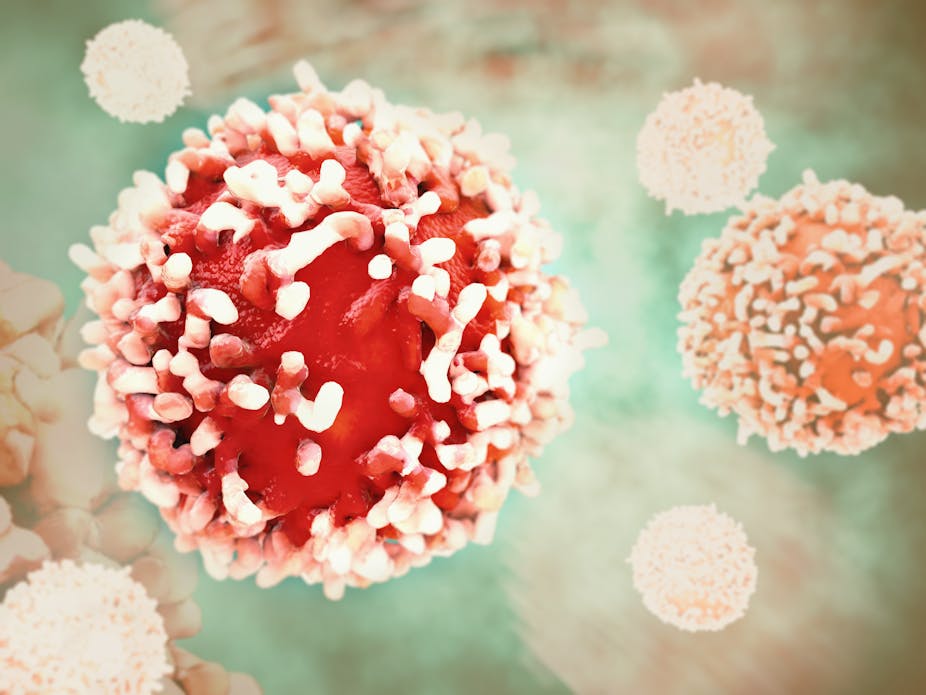In the last decade, the survival rates for most types of cancer in children have improved in developed countries. Up to 80% of the patients survive, thanks to early diagnosis, timely treatment and advances in medicine.
But most children who have cancer live in the developing world where their survival rate is less than 25%.
A study in Kenya sought to understand why.
At the Moi Teaching and Referral Hospital in Western Kenya, the survival rate for all childhood cancers is about 19%. The study found that awareness of cancer in children under 18 was low, the country’s health care resources were inadequate for diagnosis and treatment, and poor families could not afford medical insurance or transport to hospital.
Childhood cancer around the world
Cancer is rare in children under 18. It represents between 0.5% and 4.6% of all cancers globally.
Cancer of the white blood cellsand brain tumours are the leading childhood cancers globally. In sub-Saharan Africa, the commonest types are non-Hodgkins lymphoma which starts in the immune system , kidney cancer and cancer of the bone marrow.
In developing countries the reported rate of childhood cancer is low because it is undiagnosed. Awareness of cancer is low in less educated populations, and health budgets are too small to provide enough diagnostic equipment and specialised health workers. In some African countries, only 20% of patients survive cancers.
Kenya does not have a national childhood cancer registry. It relies on a hospital based registries. About 2,500 children in Kenya develop cancer every year out of about 20 million children, as calculated from the global estimate in this study.
The Kenyan study
Between January 2007 and January 2009, 222 children were newly diagnosed with cancer at the Moi Teaching and Referral Hospital in Eldoret, Western Kenya. Of these, 180 began treatment but 98 (54%) stopped. From December 2011 until August 2012, 53 (54%) of the 98 families were contacted to discuss reasons for discontinuation. The respondents thus represent 24% of the children diagnosed.
The study investigated the reasons for discontinuation of treatment by childhood cancer patients. The most common reasons given were financial difficulties (46% of respondents), lack of health insurance (27%) and transport difficulties (23%). These are all related to poverty.
The referral hospital is located in an urban area with a population of about 18 million people. Being a public referral health facility, the patients travel long distances to get services that are not available at the satellite health facilities so transport costs are unaffordable to most of them.
Treatment abandonment is the failure to return to hospital for more than four weeks for scheduled appointments.
About four out of every five children who stopped treatment had died by the time of the survey. The survival rate when we did the study was 20%. About 66% of those alive but untreated were very sick. Their families were discouraged by the cost of cancer treatment and the cost of transport to the hospital.
Reasons for discontinuing treatment
The reasons given for stopping treatment include:
Financial constraints: almost half of the families interviewed said they did not have money to pay for cancer treatment. About three out of every ten families had an average monthly income of about 44 dollars per household. About 85% of the patients’ families said cancer treatment had adversely affected other family costs like education and food.
Lack of health insurance: some families were not members of the national health insurance fund. The fund is owned by the government and members without formal employment are expected to pay a minimum of five dollars a month in premiums. At the beginning of the study, only 22% of families surveyed had this health insurance. An additional 26% subsequently registered but 52% did not have insurance because they did not apply for it.
Access to health services: about half of the families interviewed lived more than 100 kilometres from the treatment centre and could not afford the fare for public transport. Most of the patients’ families are unemployed, are farmers and live on less than a dollar a day for their household expenses. Transport expenses can be estimated at about three dollars per hospital visit. These are estimates however the actual figures depend on the type of cancer and the frequency of travel to the hospital.
Other reasons: the patients families were discouraged by families and communities with negative attitudes on the poor cancer survival rates hence they did not take their children to hospital. The long delays in hospital queues and mistrust of the health care system also kept the patients away from going for treatment. Some also expressed fear of the side effects of treatments like chemotherapy and surgery which could worsen the disease.
Way forward
In countries with universal health, the government pays for most of the hospital costs while in other the health insurance does. However the individual families still have to cater for transport costs.
There is a need for a more cohesive multi-sectoral approach to set up effective and affordable childhood cancer treatment programmes for screening, early diagnosis, treatment and palliative care for childhood cancers.
The government should enrol more Kenyans on the health insurance so that all children diagnosed with cancer can seek treatment in public health facilities. Currently some of the benefits members receive include payment of chemotherapy and radiotherapy sessions especially needy patients.
Kenya should increase public health awareness campaigns to provide information on screening for childhood cancers and give information on the available treatment options. These campaigns have worked for other non communicable diseases like Tuberculosis, HIV and some forms of cancers like breast cancer.

